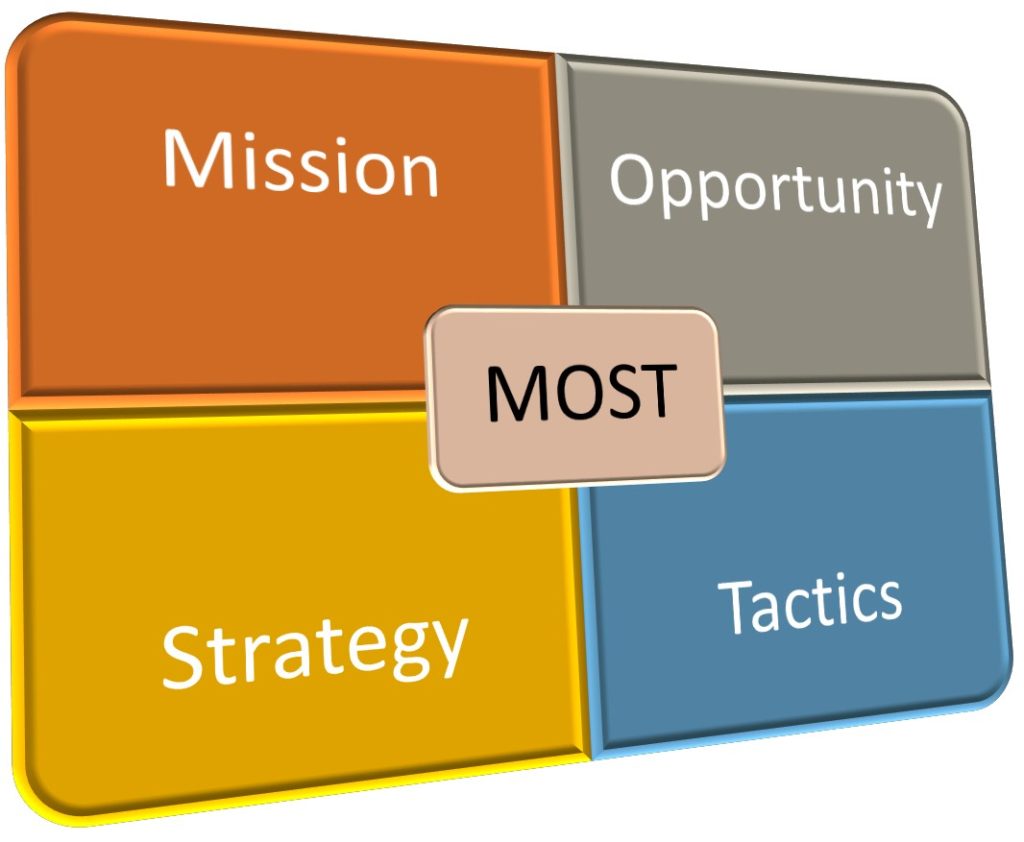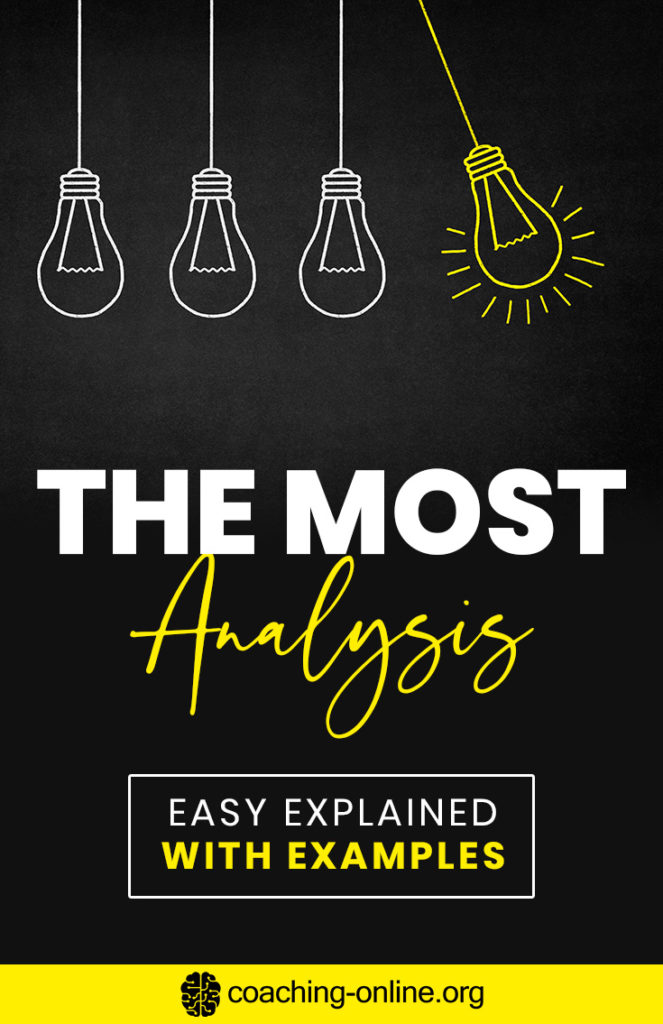Today, you’re going to see one of the most powerful analytical techniques in business.
“The Most Analysis.”
Specifically, I’ll show you how you can use this business analysis technique to turn your vision into realistic, achievable goals, therefore, build a successful business.
Here’s what you’ll learn
Let’s dive right in
What is the MOST Analysis?
When launching a business, the majority of entrepreneurs have a business plan that outlines the main goals of the organization. In the initial stages, all their actions and activities are focused on achieving the vision.
However, as time progresses and as the business grows, they slowly lose track of the plan and purpose of the business.
The overwhelming workflow puts them in an autopilot model
A majority of the daily activities don’t align with their mission objectives. They’re no longer working towards their original goal.
Which is where the MOST analysis comes in handy.
The MOST analysis is a business analytic tool used to assess what an organization wishes to achieve and how it aims to achieve the said goals.
By conducting the MOST analysis, you’re able to align your long-term goals with your day to day tasks.
The MOST analysis takes a top-down approach where you analyze four elements, namely:
- Mission: What do you want to achieve with the organization
- Objectives: Which goals are you working towards?
- Strategy: What’s your long-term approach to achieving your set objectives?
- Tactics: Which activities will you carry out to ensure you achieve your strategy?

It’s important to note that merely defining aspects of the MOST doesn’t result in changes. However, for the holistic growth of your organization, it’s essential to use other business analysis tools.
Types of Business Frameworks
PESTLE analysis: PESTLE is an acronym for political, economic, sociocultural, technological, legal, and environmental. It is a strategic tool used to analyze and understand how external factors affect and influence your business.
SWOT analysis: Used to analyze and understand an organization’s strengths, weaknesses, opportunities, and threats.
Resource Audit: Used to identify the resources available to a business. This includes machinery, patents, and retail outlets
McKinsey 7-S Framework: Used to help business owners to assess and understand the current situation of a business and how it can be improved.
Advantages of MOST Analysis
Many businesses often struggle with creating strategies and plans for the future.
Much of this is mainly due to
- A failure to define the main goals of the organization
- Moving from objectives to tactics without considering strategy
- Failure in defining responsibilities and control, which prevents the strategy from being achieved.
- Day to day distractions that take focus away from the primary goal
Conducting the MOST analysis allows you to solve most of these problems. The MOST analysis is designed to ensure internal processes of your business are aligned and move in the same direction—towards your mission.
With the MOST analysis, you can clearly define your business goals and objectives, align tactics to your business strategy and objectives, and clearly define the roles and responsibilities of different people in the organization.
In short, a MOST analysis helps to provide a logical connection between long term business goals and daily project activities.
And that’s not all
Conducting a MOST analysis allows companies to improve internal processes by breaking down communication barriers that may exist between different levels of the organization.
Where to Use the MOST Analysis
The MOST analysis is mainly used during the strategic planning phase of a business or project. You can use it for the following purposes:
- Career planning
- Defining and analyzing current and future strategy
- Aligning project delivery requirements with business objectives.

How to Do The MOST Analysis
Conducting a MOST analysis entails evaluating whether daily activities contribute to the overarching goal of your organization.
Mission
The mission is a statement of why your organization was founded. Some of the questions you can ask yourself to better understand your mission include
One important thing to remember with a mission statement is, the more specific it is, the easier it is for employees, management, and customers to relate and identify with.
Asking yourself these questions allows you to add more detail to your mission statement.
An example of a mission statement is
Invisible Children: “To end violence and exploitation facing our world’s most isolated and vulnerable communities.”
Objectives
Your objectives make it easier for you to achieve your mission.
When setting objectives, make sure to make them SMART. Every goal you create for your business should be Specific, Measurable, Achievable, Realistic, and Time-bound.
As the business progresses, objectives are monitored and evaluated until they are met, then new goals are created.
On most occasions, your objectives work to complement previously completed goals.
Here’s an example of an objective:
- To rescue 1000 children from child labor by 20XX
- To reduce child violence cases by X% by 20XX

Strategy
How will you achieve your objectives?
You need a sound plan of action.
Which is where your strategy comes in.
Your strategy is a long-term plan designed to guide you on how to achieve your goals. Having a strategy helps to steer employee actions and activities towards your overall goal.
Examples of strategies include:
- To improve media-based community sensitization on violence prevention, conservation, and conflict mediation.
- Create an efficient and smooth child rescue operation
Tactics
Tactics are the methods used to meet your strategy.
They are typically the straightforward, simple processes that help in the implementation of a strategy.
Examples include:
- Heavy advertising in local media stations which works towards achieving the strategy to improve media-based community sensitization.
- Create partnerships with local law enforcement, which works towards achieving the strategy of creating an efficient and smooth child rescue.
All these are good examples of the MOST analysis in multinational companies. However, what if you have a small business.
How do you conduct a MOST analysis for such an organisation?
Keep reading to find out.
MOST Analysis Case Study
For this MOST analysis, we’ll use Coaching Online as a case study.
Mission Statement
Our purpose as a business is to help our clients uncover the real secrets of self-growth, therefore, tap into their undeniable potential.
We aim to help our clients achieve a state of well being and a life full of satisfaction and joy.
All our actions and decisions follow this mission statement.
Objectives
Some of our main goals include:
- Increase the number of site visits by 5% every month.
- Increase engagement on the site by 3% every month
Strategy
Our strategy includes, but is not limited to:
- Create and publish exceptional and relevant content on the Coaching Online website
- Educate the public on the methods used by other people to transform their lives for the better.
- Provide a one of a kind library with free resources to help readers get their lives back on track
Tactics
To achieve the above strategy, we use the following tactics:
- Research relevant topics.
- Build a team of writers to help in creating and publishing content on the website.
- Consistently promote content on social media to ensure it reaches more people.
As you can see, each step of the MOST analysis builds up to the other.
There’s cohesion between the different tiers, which makes it easy for the business to stay on track with its long-term goals.

Achieve your Business Goals with the MOST analysis
There you have it.
A detailed explanation of how to conduct the MOST analysis.
The ball is now on your court. Time for you to bring cohesion between your company’s mission and daily activities.
Do you have any tips that may help other readers conduct a successful MOST analysis?
Tell us in the comments below.
Related Posts
12 Main Reasons Why Entrepreneurs Experience Daily Stress, And How to Prevent Them
EFE Matrix (External Factor Evaluation) — Easy Explained with Examples
